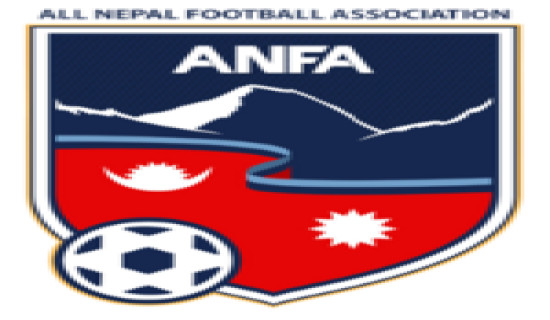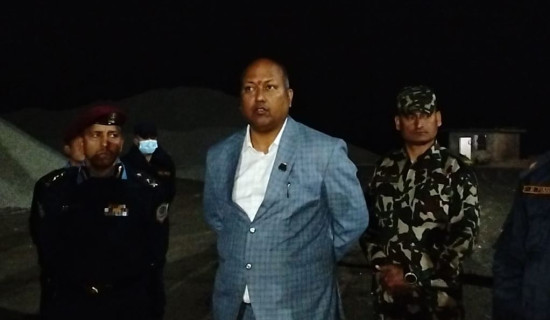- Tuesday, 11 February 2025
Cricketers' Recent Feat All Praise, No Sound Facilities
With the recent ACC Men's Premier Cup triumph, Nepali cricket has touched new heights, capturing the attention of many in our region. The current success has come on heels of Nepal's resounding victory in the World Cup qualifiers contested in February-March of this year. Our cricketers went unbeaten in all five of their recent ACC Cup matches, and in securing a spot in the World Cup qualifier, our team accomplished even an enviable feat: they won 11 of their 12 matches to defend their One-Day International status and then entered the World Cup qualifiers, which will be held in Zimbabwe in June.
In recent years, the Nepali cricket squads have made steady progress after the nation secured membership of International Cricket Council (ICC) in 1998. Among their most notable achievements is finishing in the top two in the 2018 Cricket World Cup Qualifier, securing them One Day International (ODI) qualification for the first time in history. Nepal won the 2019 ICC World Twenty20 Asia Qualifier, securing a place in the 2020 ICC Men's T20 World Cup. Nepal has also previously won the ICC World Cricket League Divisions Five, Four, Three, and Two. These achievements have helped raise the reputation of cricket in Nepal and inspire a new generation of young cricketers. In 2014 and 2018, our teams played in the T20 World Cups.
Spot in Asia Cup
The recent victory over archrivals the UAE at Kirtipur International Ground has earned them a spot in the Asia Cup, which will be held in Pakistan in September this year. Nepal's cricketers will compete in the Asia Cup against cricket's global powerhouses, India and Pakistan. Although the tension between regional powers — India and Pakistan — has made the Asia Cup an uncertain proposition because the Indian squad is unlikely to travel to Pakistan to compete. But it is possible that India will play its matches at neutral sites in the Gulf States if it is to compete. Nepal had qualified for the Asia Cup 21 years ago but was unable to play owing to the cancellation of competition when India and Pakistan got entangled in the Kargil War.
It's heartening to see that the current group of Nepali cricketers, led by Indian coach Monty Desai, has achieved a new level of performance. Desai, who has previously worked as a batting coach for many Test teams, Indian state teams, IPL teams, and different associate teams such as the UAE and Canada, has done wonders to develop the talents of both Nepali batters and bowlers. Nepal, while winning the Cup and securing qualification, displayed a better performance in both batting and bowling. Previously, Nepal's batting department was its Achilles' heel. As a seasoned coach with proven competence in batting instruction, Desai has instilled new confidence in our batsmen as he enhanced their batting skills. This is shown by Nepal's first-ever 300-run score in the ACC Premier Cup versus Oman. They were able to overcome the enemy even while they were scoring abundantly.
However, what irritates a cricket fan and player the most is that, despite outstanding performances, our players have slipped behind in terms of obtaining the facilities they need. It would be inappropriate to compare our players' facilities to those afforded to Test-playing nations' cricketers, but our players do deserve all forms of support from our government and corporate groups. While the government should always be ready to foster sports in the country by awarding champion players and teams, it may also serve as a patron to athletes who need better training, allowances, and other help to grow in their disciplines.
Cricket marketing does not just assist players; it also helps governments improve their image. Given the massive crowds who watch Nepal’s cricket matches, Nepali cricket officials stand to earn considerably from getting various sorts of sponsors. To get resources, our cricket authority should create ideas and encourage the government to aid them in implementing plans aimed at raising the status of cricket in the country. When our sports teams earn international laurels, such as the one gained by our cricketers, our government is ready to congratulate them and offer out symbolic rewards in the shape of a handful of cash. This may be beneficial in a society like ours where sports are given less priority, but handsome awards, better perks and facilities might do wonders if we want to raise the standard of the nation's sports.
Players must be given several privileges and allowances. Our government must provide sustained support to the sports sector so that our athletes and teams can become a force to be reckoned with. In terms of cricket, we urgently require sound cricket infrastructure. Because cricket is popular from the village to the national level, training and playing facilities in a variety of locales assist our players improve their skills and attract a new generation of great players. Stadiums, training grounds, and cricket academies are critical for the development of fresh talent. Nepali teams play international matches in Kirtipur and the hurriedly constructed Mulpani cricket venue. They are not up to the standards of any international-level cricket stadium.
Infrastructure development
Recently, the government has shown some vision in infrastructure development. It has announced that it will construct the Chitwan stadium that was abandoned by the Dhurmus-Suntali Foundation. Similarly, it has pledged to transform Kirtipur Ground into an international-level cricket venue and to build at least one international-level stadium in each province. Nepal has showed great promise in cricket, but much effort remains to be done to ensure that the Nepali cricketers attain their full potential. Investing in infrastructure and facilities, as well as allowing for more international competition, are key components of this programme. These enhancements may be carried out with the assistance of the government, the ICC, and other parties.
To recap, it is vital for Nepal's regulating bodies to collaborate with other authorities in order to promote local cricket. More money should be spent on players, infrastructure, contests, and leagues. In addition, for Nepali cricket to gain the recognition it deserves, an effective marketing or promotional effort must be launched. With continued funding and advertising activities from all stakeholders concerned, Nepali cricket will surge up the world's cricket rankings.
(Upadhyay is a former Managing Editor of this daily.)

















